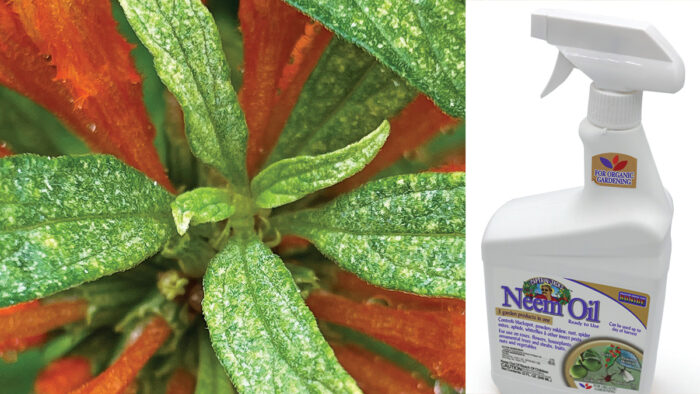
Over the past few years, I have rarely observed a plant pest or disease discussion go by without at least one eager voice recommending neem. What exactly is this seemingly miraculous all-in-one insecticidal, miticidal, and fungicidal garden product that kills or repels pests and diseases while being safe for everything else? Does this perhaps sound too good to be true? It’s a good idea to take a closer look at neem and bridge the disconnect between proven uses of this valuable product and the confusion that has risen around it as a reputed panacea.
Neem is actually three things
Neem is a collective term for a group of products derived from the neem tree, also called Indian lilac (Azadirachta indica, Zones 10–12). This tropical evergreen tree is native to the Indian subcontinent but is widely cultivated in other parts of the world, especially Africa. Leaves of the plant have long been used to deter stored-grain pests, while other parts have been employed for medicinal, pesticidal, and cosmetic uses. For garden and pest management purposes, the extremely bitter fruit and seeds are used to produce pesticides.
This is where the topic starts to become confusing, especially when gardeners hear recommendations to “use neem” without any further explanation. There are three main categories of neem products used for pest management purposes.
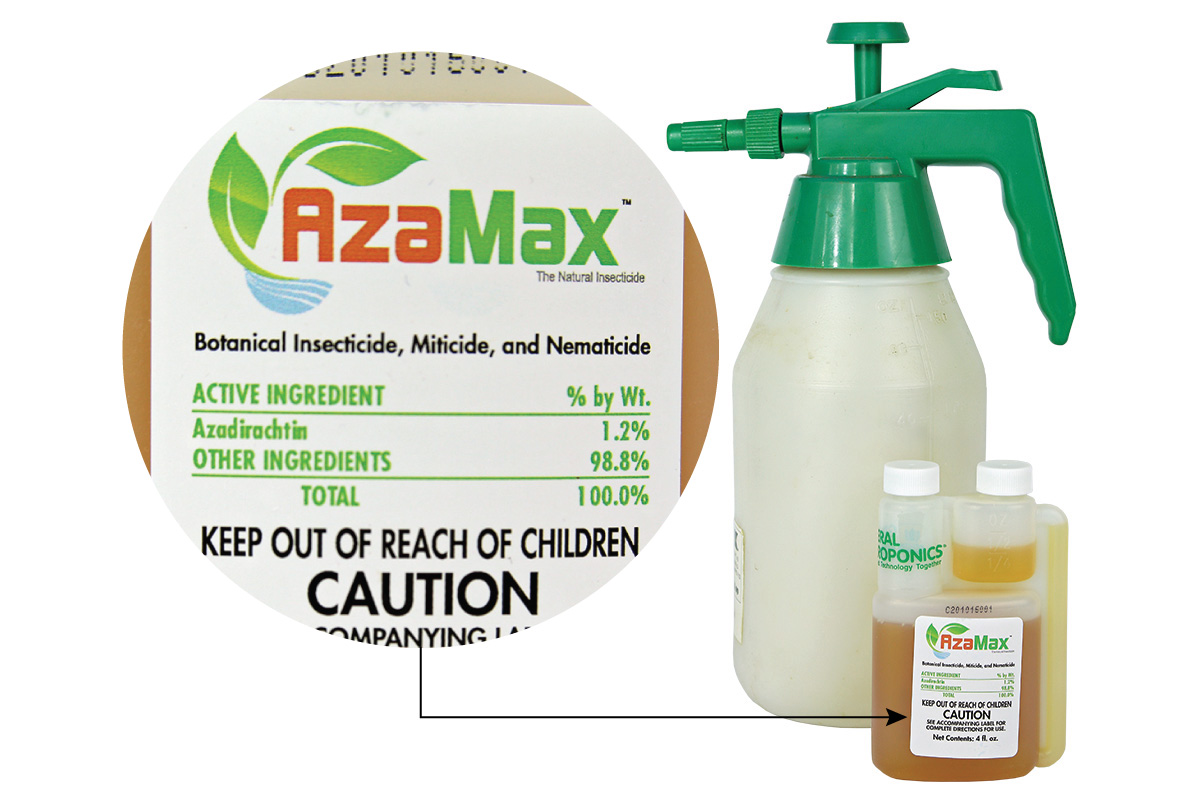
The first group consists of azadirachtin products, which contain concentrated and sometimes water-soluble formulations of azadirachtin compounds that have been extracted out of neem-seed oil using solvents. These compounds are the most powerful components of neem. They work as a repellent and feeding deterrent, and when juvenile insects consume azadirachtin by feeding on a sprayed plant, their proper growth and development is disrupted. Therefore, these products can be powerful tools to reduce pest damage and disrupt many kinds of pest life cycles. They are also slightly systemic and can be helpful against leafminer insects feeding inside of leaves. As when using any pesticide, safety instructions on the label must be followed carefully.
Tip: Use garden neem only
Medicinal or cosmetic neem products, including pricey essential oils, should never be used in the garden or for pesticidal purposes. Gardeners who hear about neem sometimes tragically burn their plants using expensive products not intended for horticultural use.
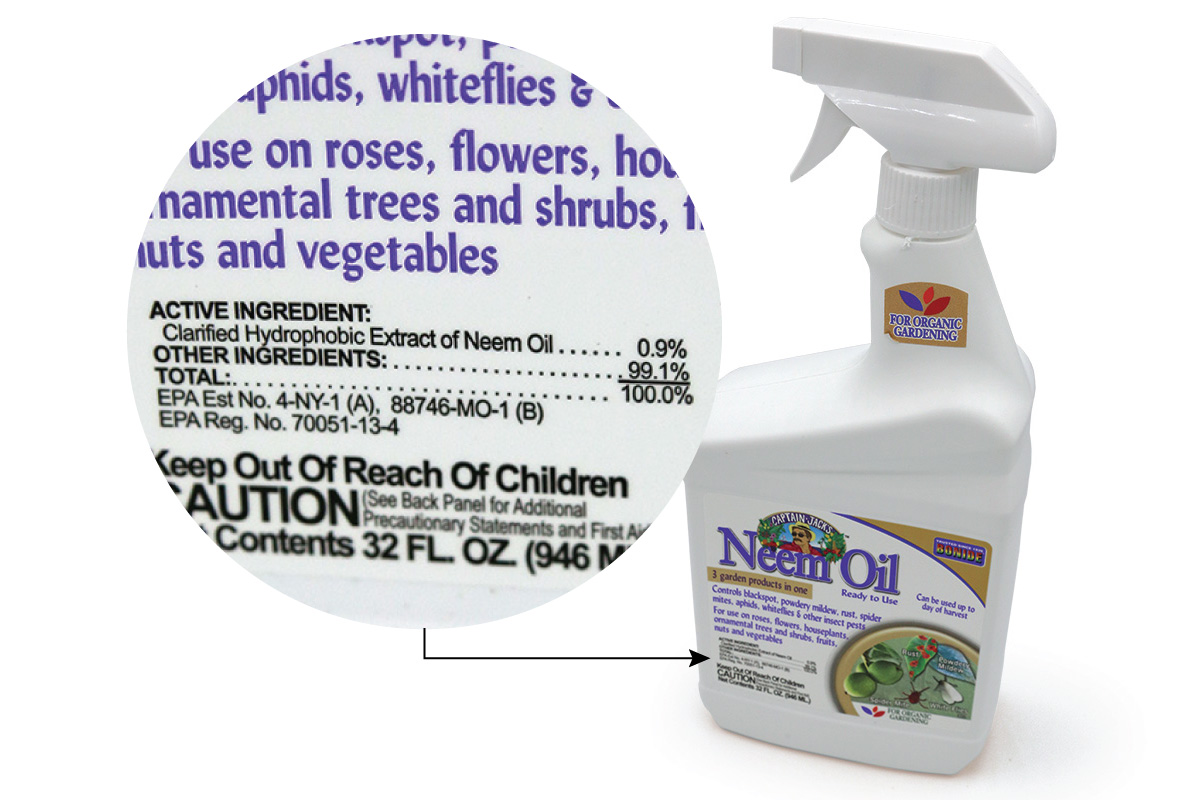
The second product group, and what most gardeners call “neem oil,” has an active ingredient known as clarified hydrophobic extract of neem oil, which we can call CHENO. These products contain the by-product that is created when azadirachtin and other compounds have been extracted from raw oil. Like horticultural oil, which is derived from highly purified petroleum-based oil, they work by smothering small insects, mites, eggs, and spores. As a bonus, they can be useful against some common fungal diseases through preventing spore germination of powdery mildews, some rusts, and rose black spot. CHENO does not, however, cure existing infections, should not be used in the soil, and does not act as a “medicine” for a sick plant. Moreover, CHENO is at best a weak fungicide and is rarely the best solution if these diseases are a big problem in your garden. Some gardeners also find its strong garlic-like smell unappealing.
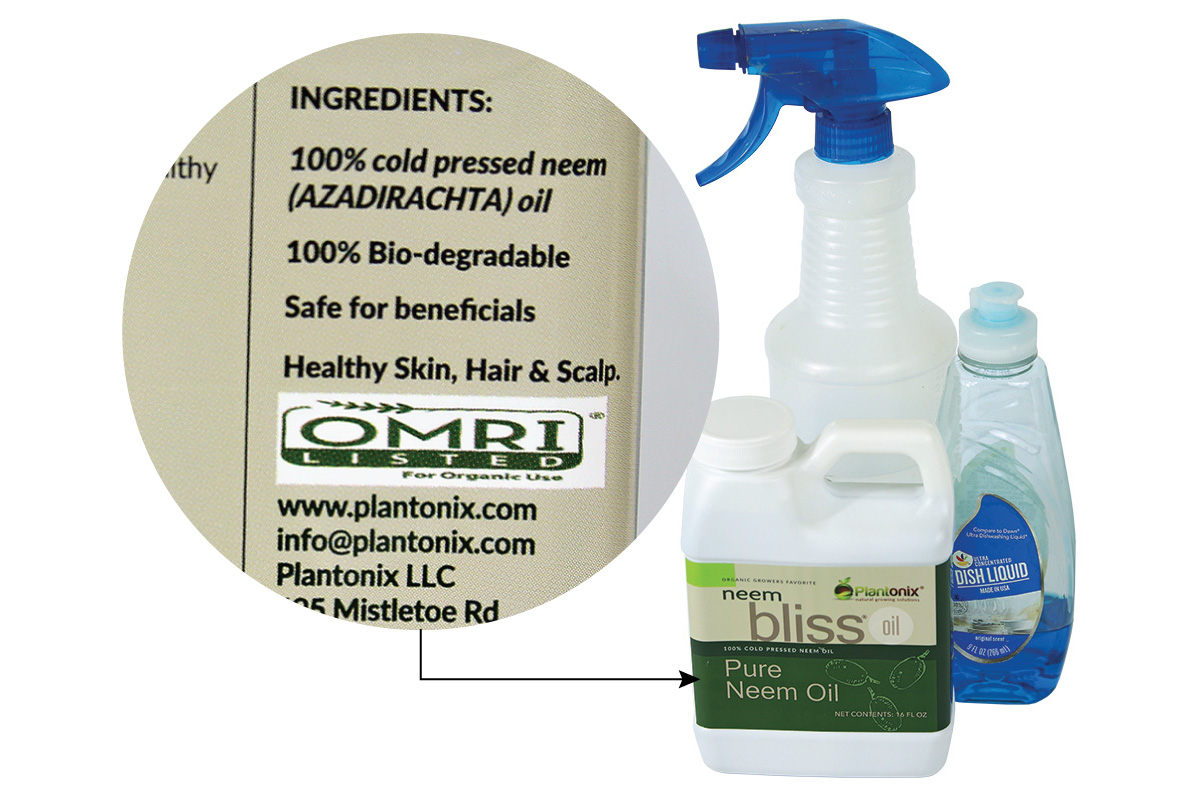
The third product group is cold-pressed neem-seed oil, often sold as “pure neem oil.” It is the whole-kernel oil and contains all of the many naturally occurring chemicals, unlike CHENO. Therefore, these products tend to be stronger pesticidal options than CHENO; they are also more difficult to use and apply, since they do not contain emulsifying agents to allow the oil to mix evenly with water. Some products are sold for health or leaf shine purposes to avoid pesticide labeling laws and may not offer instructions for pesticidal use and safer applications.
Neem can’t tell the good insects from the bad
The big question these days is whether neem will kill pests without harming other insects. I’ve heard many statements along the lines of “Neem kills pests but is safe for all beneficial insects.” Unfortunately, such a product simply does not exist, and these claims may engender a false sense of security that leads gardeners to overapply neem pesticides, even when no pest is present, or to ignore proper safety measures. On the other hand, I have also heard many harsh statements, such as “Neem is an indiscriminate garden killer.” So what is a gardener to do?
The truth lies somewhere in between. Neem products undoubtedly provide more environmentally friendly pesticide options compared to other prominent garden insecticides, particularly the go-tos such as carbaryl (best known as Sevin), malathion, and synthetic pyrethroids. All of those can be devastating to many helpful and benign organisms and are far more deserving of titles like “indiscriminate garden killers.” They also persist longer in the environment, thereby extending the time they can affect other organisms.
By contrast, azadirachtin is readily degraded in the environment and is relatively nontoxic to mammals. Neem oil products lacking azadirachtin have practically no risk to nontargeted bugs after the spray has dried, much like horticultural oil and insecticidal soap. This is all great news for neem fans, who can rest assured that neem products, when used properly, are a step in the right direction.
When should I use neem?
While many variables play into the decision of how to approach a garden problem, here are some important guidelines for using neem oil.
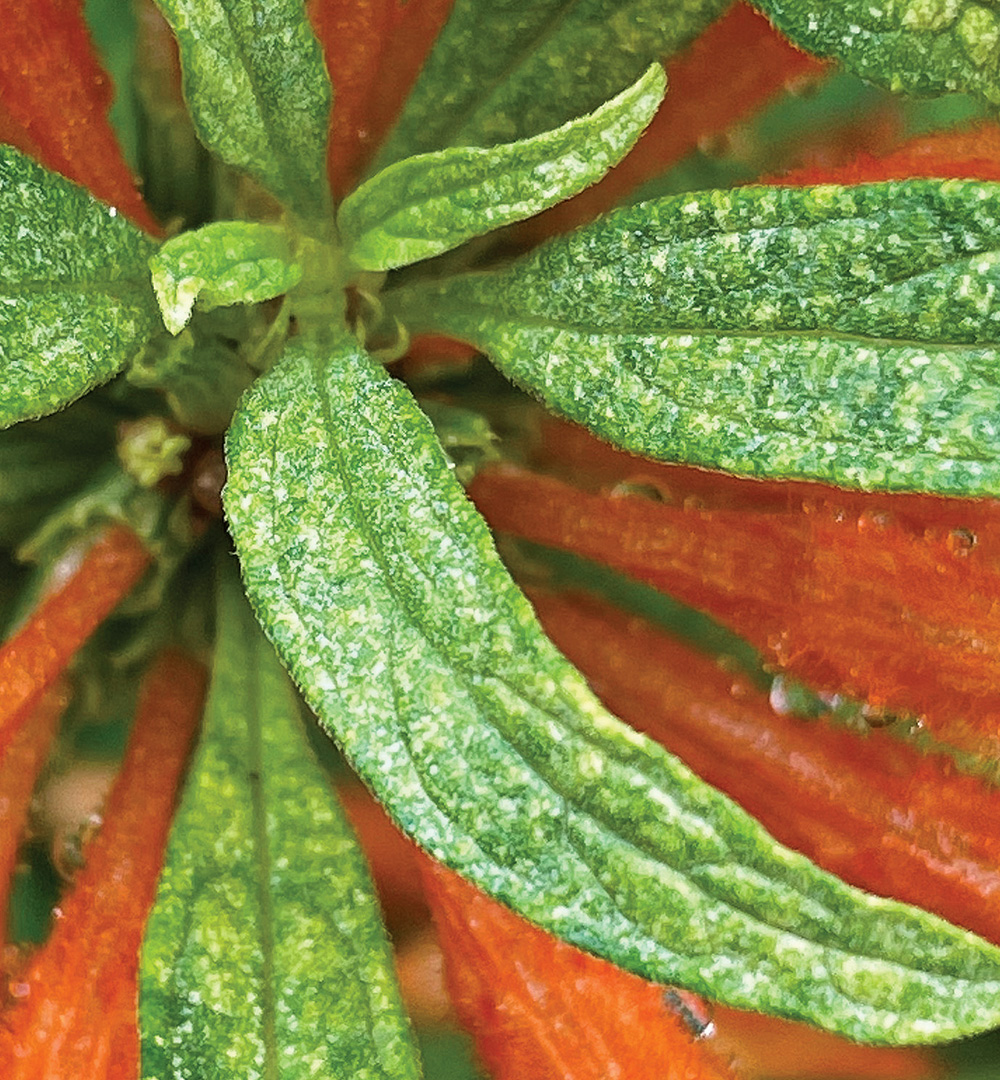
Yes
- Before diseases like powdery mildew, rust, or black spot get established
- In the evening or early morning, when the weather is cool, dry, and calm
- When pest pressure is out of balance with natural predators
No
- When insects are active on blooming plants
- When disease is already established
- If there is sulfur dust or spray on the plant, as oils mix with sulfur to cause phytotoxicity
- If the plants are seedlings, recent transplants, or very stressed
- For viral, bacterial, or root problems
- When you don’t know if neem will actually solve the problem you have

Matthew Borden, DPM, is a plant health consultant specializing in diagnostics and integrated management of landscape plant pests and diseases.


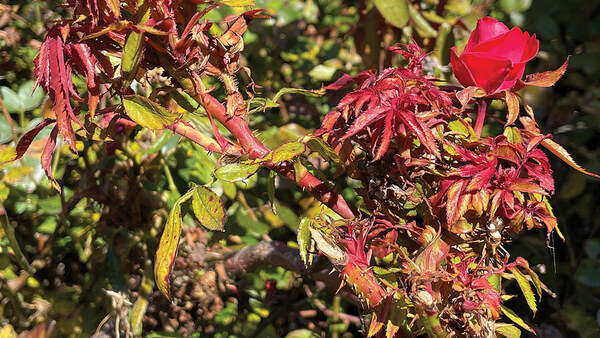
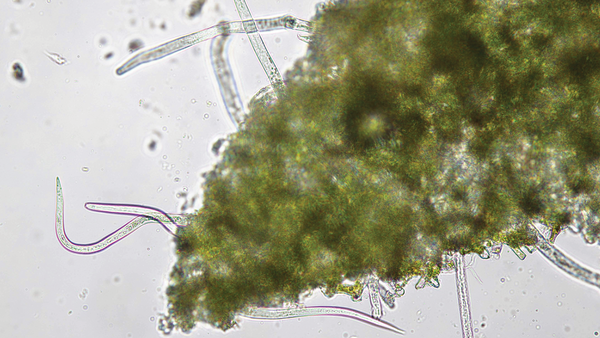
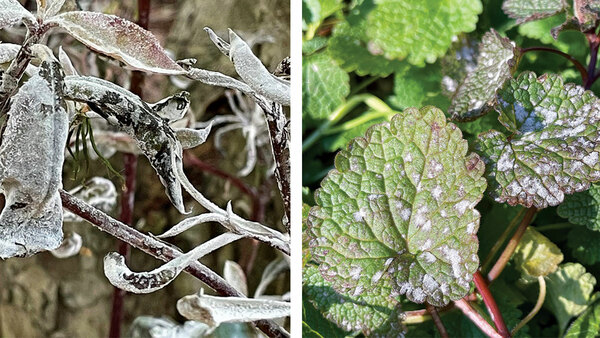













Comments
Log in or create an account to post a comment.
Sign up Log in